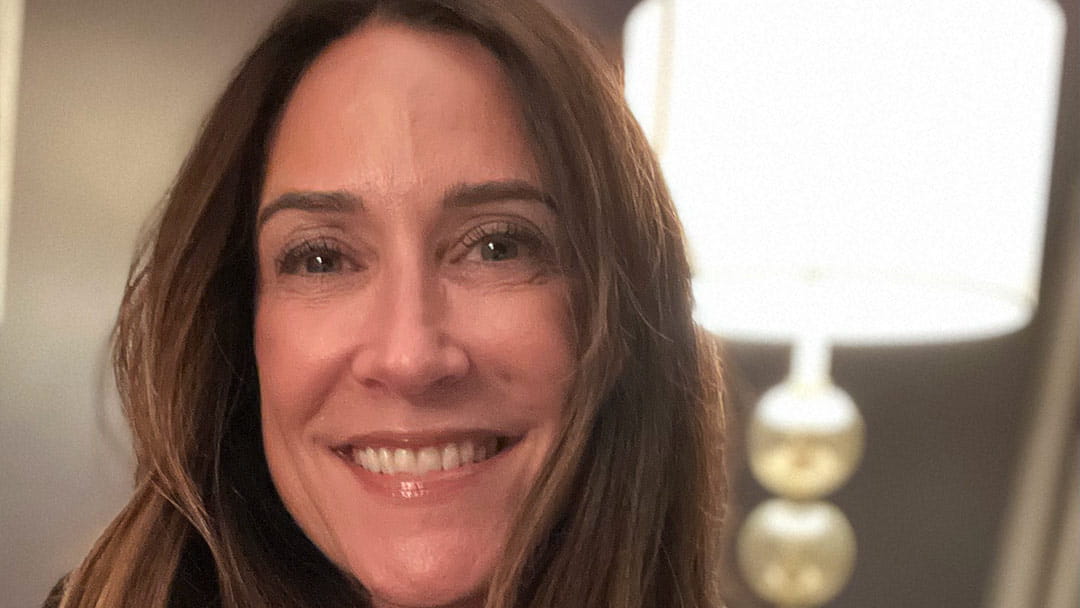
You’re operating late for a gathering. It occurs. Possibly the practice is delayed, you hit site visitors, your child is sick, you spilled your espresso, otherwise you forgot your pockets. On this scenario, the thought “There’s no method I’m going to make it to my assembly on time” is a practical one, explains Aymee Coget, PhD, constructive psychology skilled and founding father of Happiness for HumanKind. But when this thought morphs into others like, “You’re by no means on time,” “You possibly can’t get it collectively,” or “It’s best to have deliberate earlier,” then you definately’ve slid into the realm of unfavorable ideas. “It depends upon the way you’re decoding your expertise—mainly, in actuality, or by a unfavorable notion,” Dr. Coget explains. So, questioning cease unfavorable ideas?
Consultants in This Article
Aymee Coget
constructive psychology skilled and founding father of Happiness for HumanKind
Christina Lee
Nicholette Leanza
therapist at Lifestance Well being
This is only one instance of how unfavorable considering can manifest in your interior dialogue. Experiencing some unfavorable ideas is unavoidable; it’s simply a part of life. If left unchecked, nevertheless, unfavorable ideas can spiral uncontrolled and change into overwhelming. Over time, they will additionally trigger anxiousness, melancholy, and low vanity, amongst different not-so-great issues.
Really feel like unfavorable considering is operating your life? The excellent news is that you could completely take again the reins — it’s all a matter of fixing your thoughts. Should you’re questioning cease unfavorable ideas of their tracks, we tapped a couple of specialists to elucidate what causes unfavorable considering and assist your self—or another person—escape a unfavorable thought spiral subsequent time it unravels.
What’s unfavorable considering?
“Adverse considering is when an individual tends to deal with the worst elements of a scenario or expertise. It’s like they’re carrying glasses that tint every part in shades of gloom and doom and it may well change into a nasty behavior,” explains Nicholette Leanza, MEd, LPCC-S, a psychotherapist at LifeStance Well being. Negativity isn’t at all times a aware alternative. Many unfavorable ideas are automated—that’s, instantaneous, routine, and nonconscious, based on the American Psychological Affiliation (APA). Even if you happen to’re not conscious of them, unfavorable automated ideas can nonetheless have an effect on your temper and habits. “Most individuals are aware solely of their behaviors versus their ideas or their emotions,” Dr. Coget says. “So at that time, it’s a unconscious expertise, like an automated programming that’s taking place in your head.”
Should you’re questioning cease unfavorable ideas, will help to visualise the unfavorable ideas as coming out of your interior critic or interior villain. (Suppose: the traditional cartoon angel on one shoulder, satan on the opposite.) “The factor is that the interior critic exists as a liar, dictating your thought patterns and your actuality,” Dr. Coget says, and it’s not at all times straightforward to see that these ideas aren’t the reality.
Widespread forms of unfavorable ideas
Adverse, unproductive thought patterns are generally known as cognitive distortions: defective or inaccurate ideas, perceptions, or beliefs. (Extra colloquially, you will have additionally heard them known as anxiousness traps.) There are a lot of various kinds of cognitive distortions, from overgeneralizing to leaping to conclusions, that all of us fall sufferer to. Think about one October 2023 research revealed in Nursing Administration1 that surveyed 176 nursing college students in Palestine; researchers discovered that simply 15 % of scholars had “wholesome” ranges of cognitive distortions.
The checklist beneath is non-exhaustive however covers a few of the commonest cognitive distortions or unfavorable thought patterns, based on Christina Lee, MD, medical director for psychological well being at Kaiser Permanente in Baltimore, Maryland.
- All-or-nothing considering: Additionally known as black-and-white considering, that is the concept every part is all good or all dangerous with no in-between, Dr. Lee says. Suppose: You missed one objective in a soccer sport, so that you performed terribly.
- Overgeneralization: This unfavorable thought sample entails fixating on one unfavorable occasion after which assuming all future conditions could have the identical end result, Dr. Lee explains.
- Labeling: Labeling is whenever you connect a unfavorable label to your self (or others) if there’s a single unfavorable occasion, Dr. Lee says. For instance, forgetting to ship an e-mail and calling your self irresponsible, unreliable, or dangerous at your job.
- Catastrophizing: That is exaggerating the significance of one thing dangerous that occurs or adopting an irrational fear about what may occur sooner or later, Dr. Lee says. Like, “This delayed flight will now break our total trip.”
- Disqualifying the constructive or psychological filtering: This entails minimizing or rejecting constructive experiences (i.e., they “don’t rely”) and remembering solely the dangerous components of a scenario (for instance, insults/criticism greater than reward), Dr. Lee says.
- Self-blame or personalization: Seeing your self as the reason for some unfavorable exterior occasion is self-blame or personalization, Dr. Lee explains. It typically causes emotions of guilt. A standard instance is kids blaming themselves for his or her dad and mom getting divorced.
- Leaping to conclusions: Making assumptions about what others consider you or predicting a unfavorable end result (i.e., “I’m not going to get the job, so why even apply?”) are examples of this unfavorable thought sample, Dr. Lee says.
- Emotional reasoning: That is primarily based on the assumption that if you happen to’re feeling a sure method, it means it’s factually true and justified, Dr. Lee explains. For instance, “I really feel scared to exit; due to this fact, going out should be harmful.”
What causes unfavorable considering?
“Antagonistic life occasions or experiences which are traumatic can form the best way one perceives the surroundings and might reinforce specializing in the unfavorable.” —Christina Lee, MD
What typically occurs is that an individual’s mind will get wired to understand and take into consideration issues in a unfavorable mild primarily based on previous expertise, Leanza explains. “After we get uncovered to unfavorable occasions or conditions in our lives, our mind remembers these conditions extra vividly. We could start to imagine unfavorable issues are going to occur to us and will actually begin ready and on the lookout for it to occur.” And although it appears counterintuitive, unfavorable ideas could stem from our intuition to guard ourselves. “Evolutionarily talking, our brains are hardwired to have the ability to battle and survive so we’ve to be vigilant to unfavorable issues and threats round us,” Dr. Lee explains. “Antagonistic life occasions or experiences which are traumatic can form the best way one perceives the surroundings and might reinforce specializing in the unfavorable.”
commercial
It’s additionally necessary to notice that some psychological well being issues can intensify unfavorable considering, Dr. Lee says. For instance, a December 2018 research of almost 2,000 adults within the Netherlands revealed within the Journal of Affective Problems2 discovered that repetitive unfavorable considering is considerably related to depressive and anxiousness issues in addition to their signs. “When feeling depressed, we’re extra prone to get caught in unfavorable thought patterns, could ruminate on regrets of the previous, really feel hopeless, and anticipate a horrible future,” Dr. Lee explains. In the meantime, “folks with generalized anxiousness dysfunction expertise numerous worries about many elements of their lives, which might result in fearing the long run.”
Bias in direction of negativity might also be genetic. Analysis revealed within the Journal of Affective Problems3 in February 2021 discovered that rumination (obsessional considering involving extreme, repetitive ideas or themes) is linked to 2 totally different gene variations.
What are the unintended effects of unfavorable considering?
Chinese language thinker Confucius famously mentioned, “You’re what you suppose,” and he was onto one thing. It’s true that your self-talk is extraordinarily highly effective. “Ideas have an effect on feelings and behaviors,” Dr. Lee explains. “Adverse thought patterns can escalate and change into overwhelming and trigger indecision, result in difficulties in relationships or impair functioning in school or work, result in low vanity, irritability, difficulties focusing, low motivation, elevated bodily indicators of stress (i.e. complications, stomachaches, racing coronary heart, restlessness, and many others.), or exacerbate unhealthy behaviors like substance use or disordered consuming.”
On a extra excessive finish, if unchecked, unfavorable ideas can contribute to psychological well being issues, like obsessive-compulsive dysfunction (OCD), melancholy, anxiousness, or substance use issues, Dr. Lee says. Being underneath the thumb of your interior critic is like being always crushed up, Dr. Coget says—you simply can’t catch a break. Should you’re dwelling with a unconscious voice always telling you that you just’re not ok, you’re going to fail, and that nothing will work out, it makes for a reasonably fraught day-to-day. “It creates stress and melancholy, anxiousness, anti-happiness, downward spiral, trauma… there are plenty of issues that may happen in each route as a result of your thoughts is your driving expertise,” Dr. Coget says.

How do I cease having unfavorable ideas?
Nobody is one hundred pc good vibes on a regular basis (hello, poisonous positivity), however it’s attainable to rewire that automated programming and discover ways to cease unfavorable ideas. Strive these instruments.
commercial
1. Reframe and flip
Dr. Coget, Dr. Lee, and Leanza all advocate this tactic, which some specialists name thought flipping, as a first-line protection in opposition to negativity. The formulation is easy: First, acknowledge that you’re considering negatively. Then, interrupt the sample by stopping the unfavorable thought and reframing it to a extra productive thought.
Dr. Coget recommends utilizing a pocket book or your smartphone’s word app to do it. “Anytime you discover that you just’re having a unfavorable thought, write it down on the left-hand facet of the web page after which convert it to the constructive on the right-hand facet of the web page,” she says. For instance, “there’s no method I’m going to get this job” might flip into “even when I don’t get the job, on the very least, I could make some new connections and take it as a studying expertise.” Attempt to do it each single time you might have a unfavorable thought, Dr. Coget says.
2. Problem your ideas
It might probably assist to poke holes in your unfavorable ideas so that they change into much less highly effective. “As a result of folks’s brains get wired to suppose negatively, it shades the accuracy of their perceptions,” Leanza says. Ask your self questions like: Is that this a thought or a sense? Do I do know that is one hundred pc true? What are the opposite prospects? “It will also be useful to problem your unfavorable ideas by asking: ‘How is considering this manner serving to me?’ or ‘How is it serving me?’” Leanza says. “It is a method of ‘placing your ideas on trial’ and units you as much as start considering in a different way.”
3. Apply mindfulness
“Staying within the second and maintaining your self grounded within the current can calm your nervous system, gradual your coronary heart fee, and construct a stronger psychological framework that’s resilient and opposes unfavorable considering,” Dr. Lee says. And whenever you’re already within the throes of a unfavorable thought spiral, “gradual and managed respiration can calm the whirlwind of feelings,” she says. (Strive, for instance, these respiration workout routines for anxiousness or micro-meditations that will help you discover calm.)
commercial
It’d sound too good to be true, however a 2023 overview of the analysis revealed within the Journal of Affective Problems4 discovered that mindfulness interventions can certainly assist enhance ruminative considering, albeit on a degree that’s not important in comparison with cognitive behavioral remedy (CBT)—extra on that beneath.
4. Strive intentional self-care
Sure self-care practices will help edge out unfavorable ideas and aid you prioritize constructive ones. For one, a gratitude observe will help you deal with the great. “Develop a way of gratitude for good issues in life and deal with constructive, nice recollections, and achievements,” Dr. Lee recommends. “Recording [your gratitude] in a journal could be useful, and journaling could be an effective way to course of your emotions.”
It’s additionally necessary to observe self-compassion. “Being sort to your self is realizing that everybody experiences unfavorable incidents and ideas and also you’re doing all of your greatest,” she says. Be sure you’re caring for your self bodily, too: getting enough diet, sleep, and transferring your physique. “Train can launch endorphins and induce neural development, scale back irritation, and enhance oxygen to the mind and counter unfavorable thought patterns,” Dr. Lee says. Even higher? Train exterior. Spending time in nature could be calming and therapeutic and scale back stress ranges, she provides.
When to hunt skilled assist for unfavorable ideas
Should you attempt the above strategies for cease unfavorable ideas and nonetheless really feel caught in unproductive thought patterns, meaning that you’ve got deeper work to do, Dr. Coget says. That is the place a psychological well being skilled can are available in. If persistent unfavorable ideas are inflicting important unfavorable feelings and impairing your functioning or high quality of life, it might be necessary to see a psychological well being skilled for steering, Dr. Lee advises. “A therapist will help provide methods to problem your unfavorable ideas and train you CBT abilities that will help you interrupt or reframe unfavorable thought patterns and affect your emotions and behaviors in a constructive method,” she says.
“The extra time you spend together with your interior critic, the extra interior critic you’ll change into; the place your consideration goes, your power flows.” —Aymee Coget, PhD
CBT is a sort of remedy that focuses on altering your considering patterns. It’s confirmed to be fairly efficient in treating many alternative psychological well being points, together with melancholy and anxiousness, based on the APA.
What are the 5 C’s of unfavorable considering?
The 5 C’s of unfavorable considering is an idea popularized by psychologist and creator Value Pritchett, PhD. Although not extensively adopted or scientifically studied, the 5 C’s—complaining, criticizing, concern, commiserating, and catastrophizing — present a easy and helpful framework for understanding how unfavorable ideas can manifest. In a YouTube interview with Lewis Howes, Dr. Pritchett describes them as a “sneak assault” out of your interior villain voice. Every of those C phrases is a unfavorable thought sample to look out for:
commercial
- Complaining: “In a complaining state, it’s about pointing the finger out to the world versus into your self. It’s a disempowered mind-set,” Dr. Coget says. It may be needed to specific your self and “get issues off your chest,” however then it’s necessary to vary your method from trying on the downsides to on the lookout for the great within the scenario.
- Criticizing: “Criticizing comes from unmet expectations,” Dr. Coget says. “Numerous occasions our interior critic drives our behaviors by this exterior lens of what different folks [think] or what we had been informed ‘ought to’ be.” As a substitute of criticizing your self or others, deal with the great: alternative, accomplishments, what’s going effectively.
- Concern: This unfavorable thought entice isn’t about having empathy or real concern for others—it’s about fear, which is pushed by concern. “Have you ever ever seen something come from fear?” Dr. Coget poses. Usually, the issues we fear about should not an precise menace, and the act of worrying accomplishes nothing. A Could 2020 research revealed in Conduct Remedy5 had 29 contributors with generalized anxiousness dysfunction monitor their worries for 30 days, they usually discovered that 91.4 % of fear predictions didn’t come true. As a substitute of worrying about potential issues or what may go incorrect, focus as an alternative on options or what may go proper.
- Commiserating: “Distress loves firm,” Dr. Coget says. Don’t let different folks’s unfavorable attitudes cloud your individual, and resist the urge to pull others into your points. “As a substitute of commiserating, I’d encourage folks to be extra empathetic and compassionate and useful versus purchase in to no matter drama or story that’s taking place for that individual—until it’s for actual after which they should get assist,” she says.
- Catastrophizing: You’ve heard the saying, “making a mountain out of a molehill.” That’s catastrophizing, blowing issues out of proportion. “Somebody who, plenty of occasions, is traumatized, or has a very excessive degree of stress, or is on the point of like melancholy or angst or anger or one thing like that’s extra prone to suppose on this method,” Dr. Coget says. To cease catastrophic considering, dispute your ideas and demand proof that it’s truly value worrying about; the worst-case state of affairs you think about seemingly received’t stand as much as scrutiny.
How can the 5 C’s assist in the battle in opposition to unfavorable considering? They will help you construct consciousness round what your interior critic is doing in your head, Dr. Coget says. “Hang around with these 5 C’s and also you’ll begin seeing from an goal standpoint what sort of havoc your interior critic is doing in there.”
How you can assist somebody who has unfavorable ideas
There’s solely a lot you are able to do for a “Debbie Downer” or another person who’s fighting cease unfavorable ideas—in spite of everything, they’re the one individuals who can change their very own self-talk. What you can do, nevertheless, is to assist them see the assorted sides or outcomes to a scenario as an alternative of simply the unfavorable side, Leanza says. “Persistently function modeling reframe unfavorable considering will hopefully assist encourage them to do the identical.” Dr. Lee additionally recommends serving to them use the instruments listed above. “Assist them take deep breaths and deal with the current second, assist them take a look at the large image and supply examples that refute their unfavorable ideas, and ask them if their thought is absolutely true or is only a feeling,” she says.
Remaining ideas on cease unfavorable considering
The occasional downer second is comprehensible. However constant unfavorable considering can have an effect on each side of an individual’s life, Leanza says. It might probably enhance stress, anxiousness, and even melancholy, and gas plenty of concern in an individual which might make them extra reluctant to attempt new issues or to get out of their consolation zone, she continues. For these questioning cease unfavorable ideas, consciousness is step one to tackling cognitive distortions and stopping obsessive ideas. Whereas it may be useful to acknowledge and perceive how unfavorable considering works, you don’t wish to dwell on it. “A part of stopping unfavorable considering is about selling constructive considering,” Dr. Coget says. “The extra time you spend together with your interior critic, the extra interior critic you’ll change into; the place your consideration goes, your power flows.”
Further Sources
-
Alwawi, Abdallah, and Hatem Hesham Alsaqqa. “Defending the psychological well being of the long run workforce: exploring the prevalence of cognitive distortions amongst nursing college students.” Nursing administration (Harrow, London, England : 1994) vol. 30,5 (2023): 34-41. doi:10.7748/nm.2023.e2077
↩︎
-
Spinhoven, Philip et al. “Repetitive unfavorable considering as a predictor of melancholy and anxiousness: A longitudinal cohort research.” Journal of affective issues vol. 241 (2018): 216-225. doi:10.1016/j.jad.2018.08.037
↩︎
-
Scaini, Simona, et al. “Rumination Considering in Childhood and Adolescence: A Temporary Evaluate of Candidate Genes.” Journal of Affective Problems, vol. 280, 2021, pp. 197-202, https://doi.org/10.1016/j.jad.2020.11.008. Accessed 21 Aug. 2024.
↩︎
-
Mao, Lingyun, et al. “The Effectiveness of Mindfulness-based Interventions for Ruminative Considering: A Systematic Evaluate and Meta-analysis of Randomized Managed Trials.” Journal of Affective Problems, vol. 321, 2023, pp. 83-95, https://doi.org/10.1016/j.jad.2022.10.022. Accessed 21 Aug. 2024.
↩︎
-
LaFreniere, Lucas S., and Michelle G. Newman. “Exposing Fear’S Deceit: Proportion of Unfaithful Worries in Generalized Nervousness Dysfunction Therapy.” Conduct Remedy, vol. 51, no. 3, 2020, pp. 413-423, https://doi.org/10.1016/j.beth.2019.07.003. Accessed 21 Aug. 2024.
↩︎









